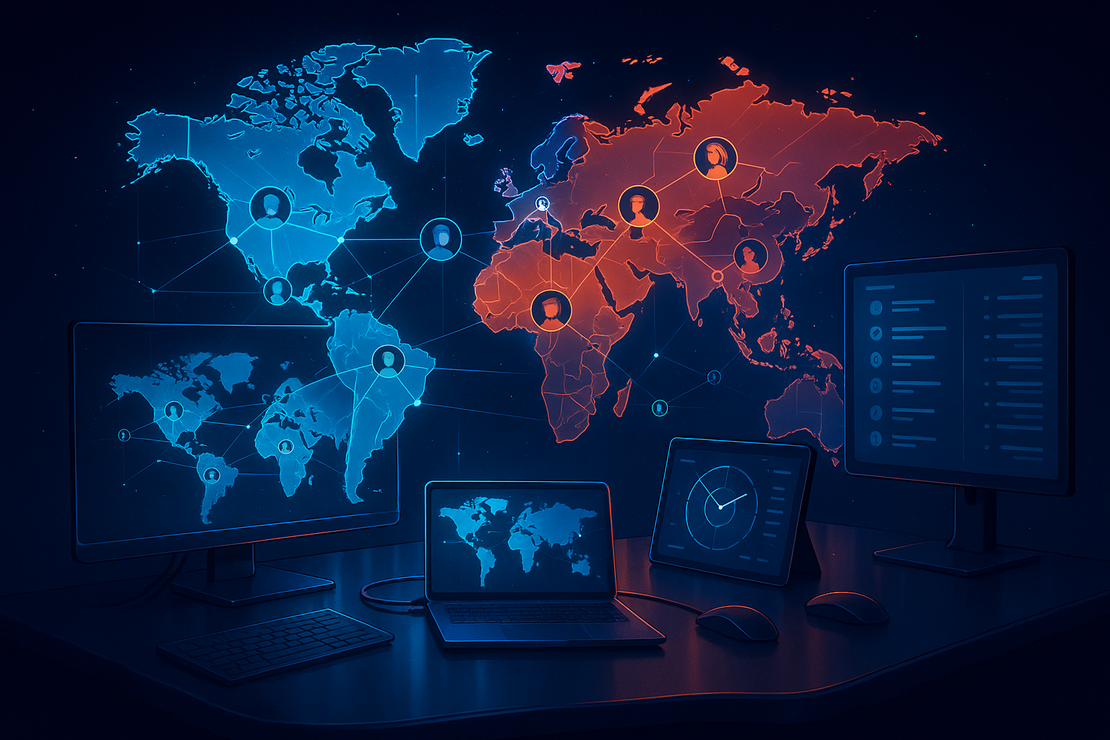
Struggling with time zone headaches? Managing global teams can feel impossible without the right tools. From scheduling mishaps to delayed decisions, time zone challenges can derail projects fast. The good news? There are tools designed to fix this.
Key takeaways:
- Automated time zone detection ensures accurate scheduling across regions.
- Calendar integrations simplify meeting setups and avoid double-booking.
- Asynchronous tools keep work moving, even when teams are offline.
- Specialized platforms like World Time Buddy and Calendly make coordination easier.
For a hands-on approach, Hyperion360 aligns remote engineers to your time zone, ensuring smoother collaboration.
Below, you’ll find the best tools and strategies to keep your distributed team productive and connected.
Key Features to Look for in Time Zone Management Tools
When choosing time zone management tools for your distributed engineering team, certain features can make a big difference in how smoothly your team collaborates. The right mix of automation, integration, and communication support can help ensure your team stays connected, no matter where they’re located. Each feature contributes to streamlining global workflows.
Automated Time Zone Detection
Accurate time data is a must for global teamwork. Automated time zone detection eliminates the need for manual calculations, which often lead to scheduling mishaps or missed meetings. This feature ensures tools can identify each user’s local time zone and adjust meeting times, deadlines, and notifications automatically.
For instance, tools like Calendly can detect invitees’ time zones and show meeting slots in their local time. If someone in San Francisco schedules a meeting with team members in London and São Paulo, the system automatically displays the correct time for each participant. Many tools also include visual interfaces to highlight overlapping working hours.
Additionally, these tools often account for daylight saving time changes, ensuring schedules remain accurate and reducing confusion.
Scheduling and Calendar Integration
Integrating with calendars simplifies time zone management, turning it from a manual chore into an effortless process. The best tools sync with popular platforms like Google Calendar, Outlook, and iCal, automatically converting times for participants and helping avoid double-booking. They also send invites that reflect the correct local time for everyone involved.
These tools adapt meeting times across regions and even include features like buffer time, which creates breaks between meetings. This is especially helpful when juggling time zones, as it allows for smoother transitions and avoids back-to-back scheduling issues.
Asynchronous Communication Support
Even with synchronized schedules, maintaining smooth communication is critical - particularly when team members have limited overlapping work hours. Asynchronous communication tools are key for keeping projects on track without requiring everyone to be online at the same time.
Platforms like Asana make this easier by incorporating time zone awareness. Team members can post updates, share comments, and mark tasks as complete, allowing others to review and respond during their own working hours. For example, a developer in Argentina might finish a task late in the day, and their colleagues in California can pick it up the next morning without needing a live meeting.
Features like shared messaging boards, collaborative documents, and smart notifications also help workflows move forward, even with time gaps. Notifications are often timed to avoid interrupting off-hours, keeping everyone informed while minimizing disruptions.
Top Tools for Managing Time Zone Differences
Coordinating across time zones can be tricky, but the right tools can make it much easier. Here’s a look at some standout options that simplify scheduling and collaboration for distributed teams.
World Time Buddy
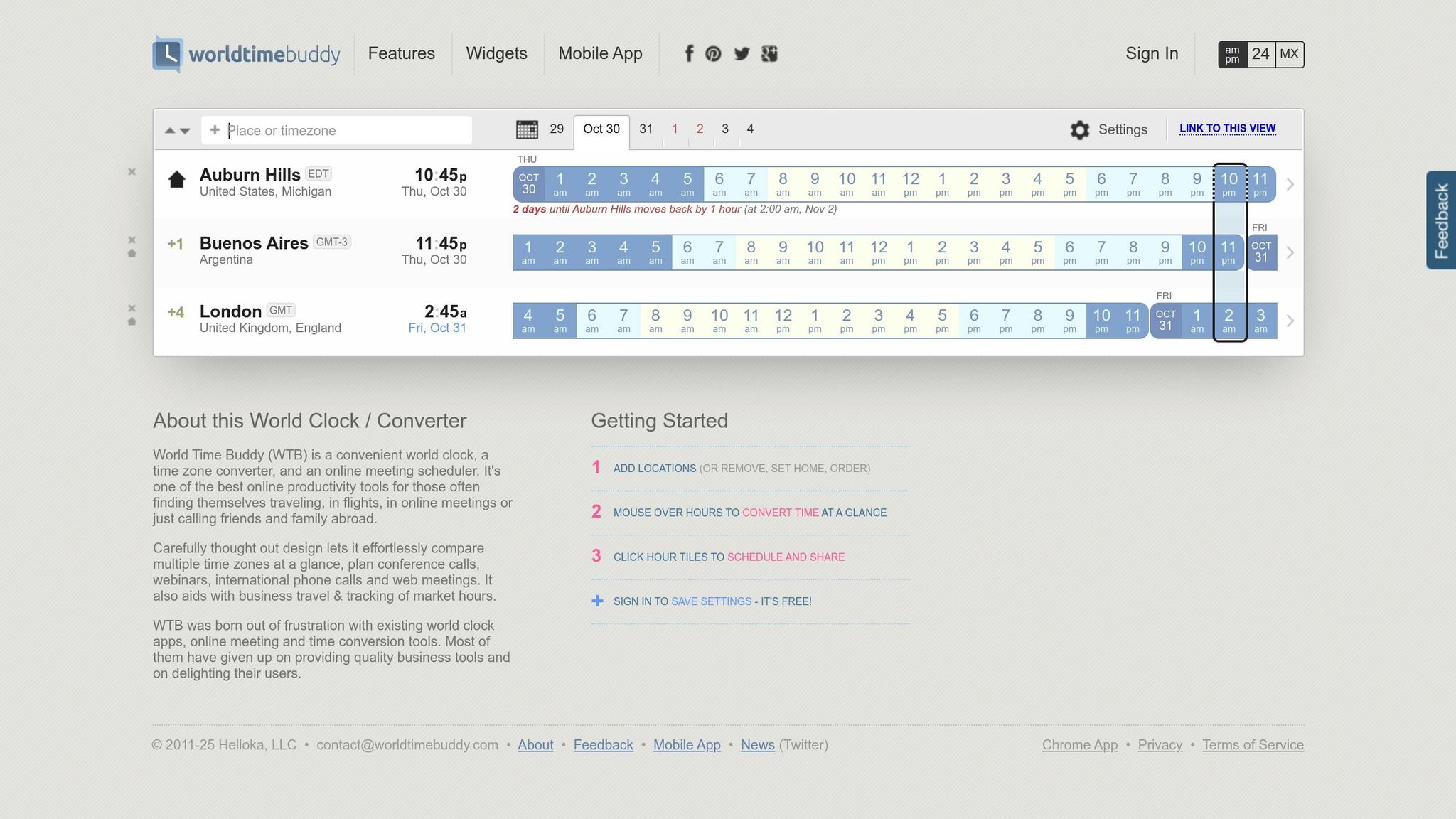
World Time Buddy shines when it comes to visualizing time zones. Its side-by-side calendar views let you compare multiple time zones effortlessly, and the interactive time slider allows you to adjust timelines and instantly see corresponding times in different locations. This makes finding overlapping meeting windows a breeze.
The tool automatically accounts for daylight saving time, so schedules stay accurate year-round. It integrates seamlessly with Google Calendar and offers mobile apps, ensuring accessibility wherever you are. For example, an engineering manager in the U.S. can use World Time Buddy to quickly spot a two-hour overlap between team members in California, Brazil, and Vietnam, making it easier to plan productive meetings.
Calendly
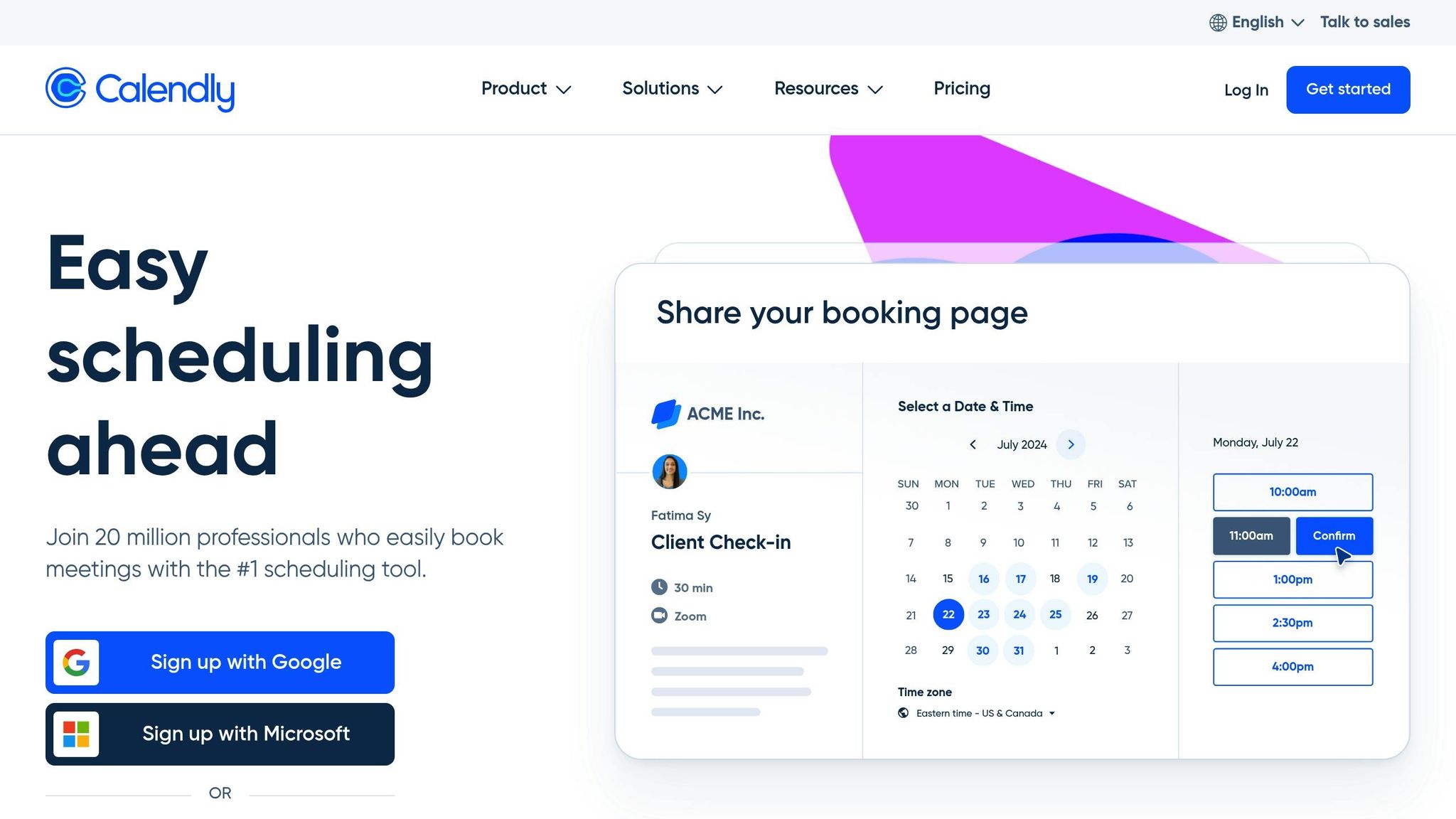
Calendly simplifies scheduling by automatically detecting invitees’ time zones and syncing with tools like Zoom, Google Meet, and Microsoft Teams. It eliminates the hassle of back-and-forth emails and even offers buffer times to prevent burnout. With meeting templates tailored for various needs, it’s a great fit for engineering discussions.
Highly rated on platforms like Capterra and G2 (4.7/5), Calendly has helped distributed teams save up to 30% of the time spent coordinating meetings. Pricing starts at $10-12 per user per month, with a free tier available. It also supports payment processing for external meetings, making it useful for client collaborations as well.
Clockify
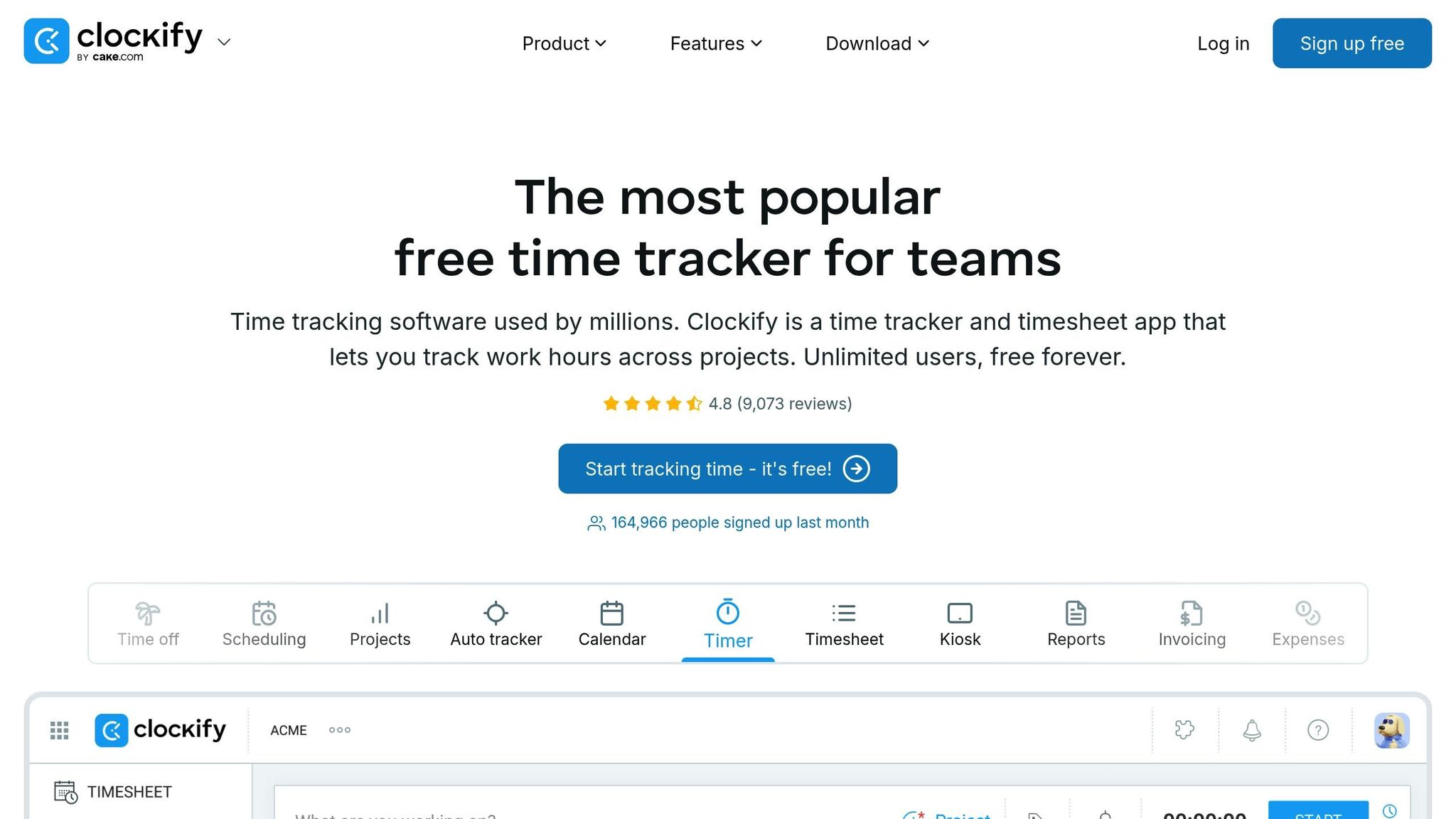
Clockify combines time tracking and multi-time zone support into one intuitive platform. Team members can log hours and view real-time tracking data from anywhere, giving managers a clear picture of productivity patterns across different regions.
The platform’s project-based reporting ensures work hours are synchronized, boosting both transparency and efficiency. With a 4.7/5 rating on G2 and Capterra, Clockify is a trusted choice for global teams. Its pricing starts at $3.99 per user per month, following a free tier. By showing when team members are actively working, Clockify helps managers optimize collaboration and meet deadlines across time zones.
Asana
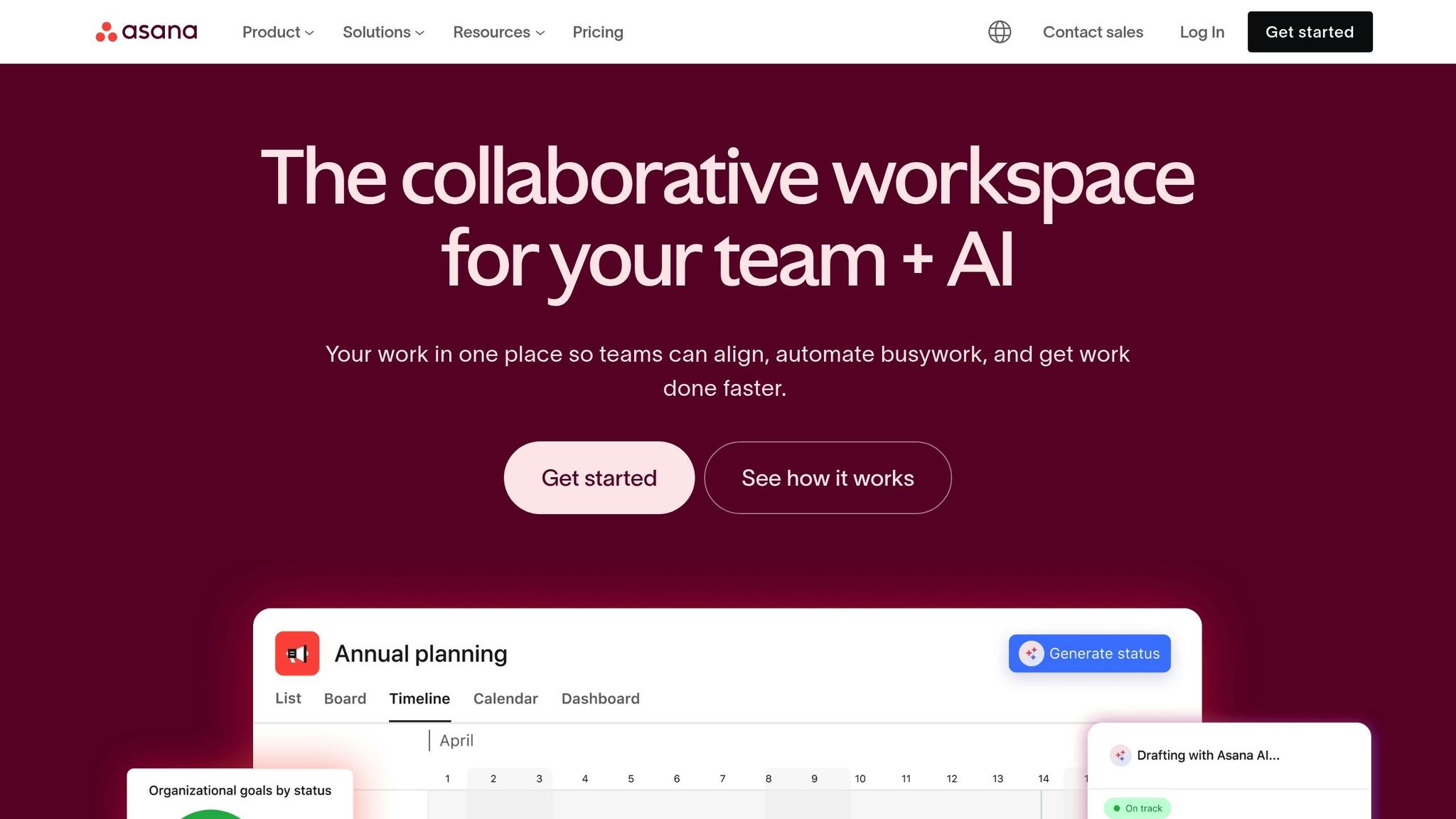
Asana offers robust project management tools with built-in time zone awareness. It supports task assignments, deadline tracking, and progress monitoring, all while aligning tasks to local time zones. Features like customizable workflows, calendar integration, and real-time notifications ensure smooth coordination.
Rated 4.5/5 on G2 and Capterra, Asana is a reliable choice for distributed teams. Pricing begins at $10.99 per user per month after a free tier. Its integration with tools like Slack and Google Drive creates a seamless workflow, while time zone-specific alerts help team members stay on track without disrupting their work-life balance.
Hyperion360

Hyperion360 takes a different approach by providing remote software engineers who work in the client’s time zone. This ensures 4-8 hours of daily overlap, enabling real-time collaboration and cutting down on communication delays.
Engineers are pre-vetted for skills and language proficiency, and the company boasts a 97% yearly retention rate with the same clients. Engineers can begin working in as little as 1-14 days, integrating directly into the client’s tools and processes with minimal oversight. Hyperion360 offers 50%+ annual savings per engineer, potentially saving up to $100,000 per year compared to hiring local talent.
Unlike traditional tools that help coordinate across time zones, Hyperion360 eliminates the issue by aligning team members’ work hours. This approach has been adopted by Fortune 500 companies and startups alike, with engineers from countries like Vietnam, Argentina, and Brazil seamlessly working within U.S. business hours.
Hire Vetted Remote Software Engineers
Want to hire vetted remote software engineers and technical talent that work in your time zone, speak English, and cost up to 50% less?
Hyperion360 builds world-class engineering teams for Fortune 500 companies and top startups. Contact us about your hiring needs.
Hire Top Software DevelopersBest Practices for Aligning Work Across Time Zones
Managing teams across multiple time zones can feel like a juggling act, but with the right strategies, it’s possible to boost productivity while respecting everyone’s work-life balance. Below, we’ll explore practical ways to align schedules, streamline asynchronous workflows, and improve processes over time.
Establish Core Overlapping Hours
One of the biggest challenges for distributed teams is finding time for real-time collaboration. The solution? Establishing core overlapping hours. These shared hours give everyone a consistent window to connect without pushing anyone into unreasonable working times.
Start by mapping out everyone’s time zones using tools like World Time Buddy. For teams spread across continents, even a brief overlap can be invaluable for critical discussions or decision-making.
To make things fair, consider rotating meeting times. For example, if your East Coast team members are always waking up early for a 7:00 AM meeting, alternate the schedule occasionally so the burden is shared. Flexibility shows respect for your team’s diverse schedules and helps maintain morale.
Use Asynchronous Communication
Asynchronous communication is the lifeline of distributed teams. It ensures work keeps moving, even when some team members are offline. The goal is to create systems that allow progress to flow seamlessly across time zones.
Centralize updates on platforms like Notion or Confluence. For instance, if a developer wraps up a task late in the day, they can leave detailed notes on what’s done, any challenges they faced, and next steps. This kind of handoff keeps projects moving without unnecessary delays.
Key meetings can be recorded so no one misses important information. Threaded chats also help team members catch up at their own pace. Setting clear expectations for response times - like 24 hours for non-urgent issues or quicker replies during overlapping hours - keeps communication efficient.
Review and Optimize Workflows Regularly
No workflow is perfect forever. As teams grow or projects evolve, regular reviews are essential for spotting inefficiencies and making improvements.
Conduct quarterly assessments to evaluate how well things are running. Metrics like task completion rates or meeting attendance can highlight bottlenecks. Pair these with anonymous surveys or retrospective meetings to gather honest feedback. Ask questions like: Are time zone challenges causing delays? Are asynchronous handoffs effective? Are the tools we’re using meeting everyone’s needs?
Conclusion
The challenges of managing global time zones can feel overwhelming, but with the right tools and strategies, they become opportunities to enhance team performance. Modern solutions don’t just address time zone conflicts - they actively improve how teams work together.
According to a 2024 Buffer survey, 98% of remote workers identify time zone differences as a major hurdle. Yet, companies leveraging automated management tools report delivering projects 20–30% faster and achieving a 15% boost in team satisfaction. These tools minimize coordination delays and turn potential setbacks into operational strengths.
Rather than revisiting every tool’s specific benefits, it’s the combination of features like visual scheduling, automated time zone detection, and integrated workflows that enables smooth global collaboration. Automated detection helps avoid scheduling mishaps, while asynchronous communication ensures progress continues uninterrupted, no matter the hour.
For organizations building global engineering teams, Hyperion360 offers a tailored solution. Their engineers work within the client’s time zone, ensuring 4–8 hours of daily overlap. This eliminates communication gaps and streamlines collaboration.
In today’s distributed work environment, effective time zone tools are more than just conveniences - they’re essential for faster development cycles, better-quality code, and happier, more connected teams. As global engineering becomes the norm, these tools are the backbone of competitive software development.
Frequently Asked Questions
How do automated time zone detection tools help global teams schedule more effectively?
Automated time zone detection tools make scheduling across global teams much easier by automatically figuring out and adjusting to each participant’s local time. This removes the need for manual calculations, minimizes mistakes, and ensures meetings or deadlines are correctly aligned no matter the region.
By taking the hassle out of managing time zones, these tools save precious time, boost coordination, and let teams concentrate on working together instead of worrying about logistics. They’re particularly helpful for remote teams spread across multiple countries and time zones.
How can asynchronous communication tools help manage distributed teams across time zones?
Asynchronous communication tools play a key role in managing distributed teams spread across various time zones. They make it possible for team members to share updates, collaborate, and reply to messages on their own schedule, cutting down the need for overlapping work hours.
These tools keep everyone in the loop and productive without the stress of needing to respond instantly, promoting both efficiency and a healthier work-life balance. For instance, shared task boards, project management platforms, and video recording software allow teams to work together smoothly, no matter where they are in the world.
What’s the best way to set overlapping work hours for team members in different time zones?
When coordinating overlapping work hours for teams spread across different parts of the world, the key is finding a time window that accommodates the most critical time zones. This approach promotes smoother collaboration and allows for real-time conversations, which can make a huge difference in team dynamics.
Working with remote, full-time technical experts who can match your time zone can make this process even easier. These professionals can blend effortlessly into your team, communicate effectively in English, and keep productivity on track without causing any interruptions to your existing workflows.
Comments